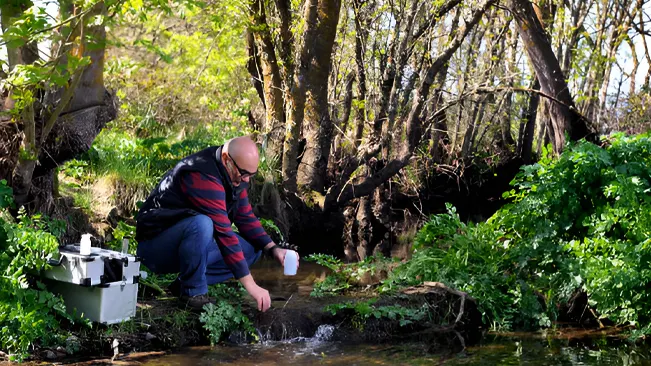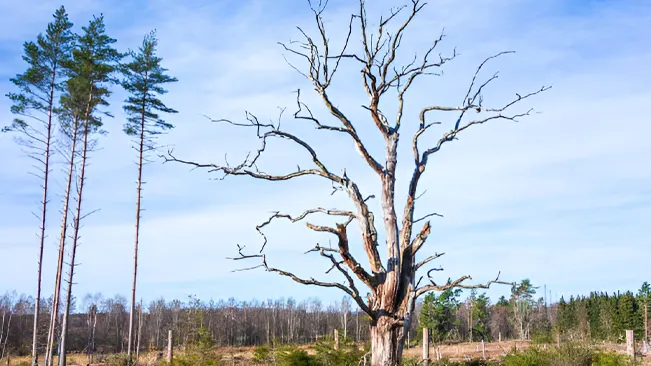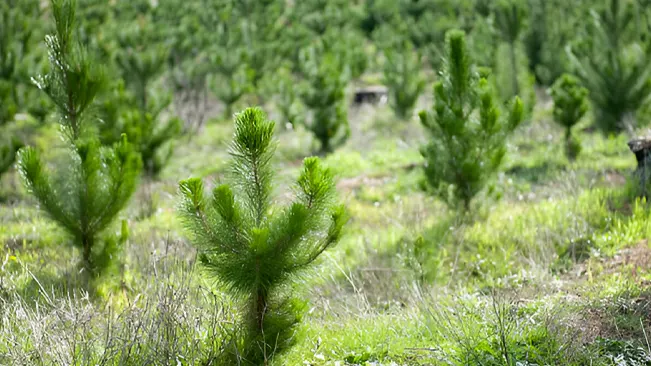Effective Forest Management: Sustainable Conservation Strategies
- September 9, 2024
- 0 comment
Effective forest management is crucial for ensuring the long-term health and sustainability of our natural ecosystems. In today’s world, where environmental challenges are increasingly pressing, implementing well-designed forest management plans can make a significant difference. Exploring key strategies for creating and executing forest management plans that not only conserve biodiversity but also support sustainable practices, we can focus on adaptive management, stakeholder engagement, and innovative techniques to protect forest ecosystems and promote environmental conservation for future generations.
Understanding the Forest Ecosystem
A forest ecosystem is a complex and interconnected web of living organisms and their physical environment. Trees, the defining feature of forests, form the canopy that provides shade, shelter, and food for various organisms. They play a vital role in the water cycle by absorbing and transpiring vast amounts of water and storing carbon dioxide through photosynthesis. Beneath this canopy, a diverse array of understory plants, including shrubs, herbs, ferns, mosses, and fungi, thrive. These plants stabilize soil, cycle nutrients, and offer habitats for smaller organisms, contributing to the ecosystem’s overall health.

Wildlife in forests, such as mammals, birds, reptiles, amphibians, and insects, each occupy specific ecological niches, playing crucial roles like pollination, seed dispersal, herbivory, and predator-prey interactions. This diversity enhances the genetic resilience of the forest. Additionally, forest soils, a dynamic mixture of organic matter, minerals, water, air, and microorganisms, support plant growth and facilitate nutrient cycling and water filtration. The interplay among trees, understory plants, wildlife, and soils demonstrates the intricate interdependence of forest ecosystem components, highlighting their collective role in maintaining ecological balance and supporting life.
Benefits of Sustainable Management
Biodiversity Conservation
Sustainable forest management (SFM) plays a critical role in preserving biodiversity by maintaining a variety of habitats and ecological processes. By avoiding over-harvesting and implementing practices that ensure habitat connectivity, SFM supports a diverse array of plant and animal species. This approach helps prevent habitat fragmentation and loss, which are major threats to wildlife. Diverse habitats are essential for sustaining populations of different species, each with unique ecological needs. By maintaining these habitats, SFM fosters ecosystems where wildlife can thrive, ensuring the long-term health and stability of the environment.

Furthermore, SFM often incorporates practices such as creating wildlife corridors and preserving old-growth forests, which are vital for species migration and genetic diversity. These measures help protect endangered species and support overall ecosystem resilience. In this way, SFM not only conserves existing biodiversity but also enhances the ability of ecosystems to adapt to environmental changes and disturbances, promoting a balanced and healthy natural world.
Carbon Sequestration
Forests are crucial in combating climate change due to their ability to absorb and store carbon dioxide (CO2) from the atmosphere. Sustainable management practices that maintain or expand forest cover play a significant role in this carbon sequestration process. By preserving existing forests and promoting reforestation, SFM helps to capture CO2, reducing the greenhouse gases that contribute to global warming. Healthy, well-managed forests act as carbon sinks, storing carbon in their biomass and soil.

Moreover, sustainable forest management practices, such as selective logging and reduced-impact logging, ensure that carbon storage is maximized while minimizing disturbance to the forest ecosystem. These practices help to maintain the forest’s capacity to sequester carbon over the long term, supporting efforts to mitigate climate change. As forests are managed sustainably, they continue to perform their critical role in regulating atmospheric CO2 levels, contributing to global climate stability.
Water Regulation
Forests play a pivotal role in regulating water cycles and maintaining watershed health. Their root systems help stabilize soil, preventing erosion and reducing sediment runoff into water bodies. This stabilization is crucial for maintaining water quality and ensuring that rivers and streams remain clear and healthy. Additionally, forests act as natural water filters, with their vegetation absorbing and processing pollutants before they reach aquatic systems.

Sustainable management practices, such as maintaining riparian zones and implementing erosion control measures, further enhance these water-regulating functions. By ensuring that forests are managed in a way that preserves their ecological integrity, SFM helps to maintain the natural water flow and quality, supporting healthy aquatic ecosystems and reducing the impact of climate and land-use changes on water resources.
Economic Benefits
Sustainable Timber Production
Sustainable forest management enables the continuous supply of timber and wood products while ensuring that forest ecosystems are not degraded. Through careful planning and adherence to sustainable practices, forests can be harvested in a way that balances economic needs with environmental protection. This includes methods such as selective logging and clear-cutting in a controlled manner, which allow for the regeneration of trees and the maintenance of ecosystem functions.

By providing a reliable source of timber, SFM supports both local and global markets, creating economic opportunities and contributing to the forest industry’s stability. This sustainable approach ensures that forest resources are available for future generations, reducing the risk of resource depletion and promoting long-term economic sustainability.
Tourism and Recreation
Well-managed forests offer numerous opportunities for eco-tourism and recreational activities, which can significantly boost local economies. Activities such as hiking, bird-watching, and guided nature tours attract visitors and generate income for businesses and services in forested areas. This economic benefit extends to local communities, providing revenue through lodgings, dining, and other tourism-related services.

Sustainable management practices that maintain the health and accessibility of forest areas enhance their appeal as tourist destinations. By balancing conservation with tourism, SFM helps to ensure that these natural resources remain attractive to visitors while preserving their ecological value. This approach supports both economic development and environmental stewardship, creating a win-win scenario for communities and ecosystems alike.
Non-Timber Forest Products
Forests provide a wealth of non-timber products, including fruits, nuts, medicinal plants, and resins, which are vital for local economies and livelihoods. Sustainable management practices ensure that these resources are harvested in a manner that does not compromise the forest’s health or ecological balance. By regulating the collection of non-timber products, SFM supports biodiversity and helps maintain the forest’s capacity to continue providing these resources.

The sustainable harvesting of non-timber forest products can create economic opportunities for local communities, enhancing their livelihoods and contributing to the conservation of forest areas. By integrating these practices into forest management plans, communities can benefit from the economic value of their natural resources while supporting the overall health and sustainability of the forest ecosystem.
Social Benefits
Community Involvement
Involving local communities in forest management processes empowers them to actively participate in decision-making and management activities. This engagement ensures that management practices reflect local needs and knowledge, leading to more effective and equitable outcomes. When communities are involved, they are more likely to support and adhere to management practices, resulting in better conservation efforts and sustainable resource use.

Community participation also fosters a sense of ownership and stewardship, as residents are directly affected by and benefit from forest management decisions. This collaborative approach can lead to innovative solutions that address both environmental and social challenges, creating more resilient and adaptive management strategies.
Cultural Preservation
Forests often hold significant cultural and spiritual value for indigenous and local communities. Sustainable forest management practices help to protect these cultural values by respecting traditional practices, sacred sites, and heritage. By integrating cultural considerations into management plans, SFM ensures that these important aspects of community identity and heritage are preserved.

This respect for cultural values not only supports the social fabric of communities but also enhances the overall effectiveness of forest management. Recognizing and preserving cultural connections to the land helps build stronger relationships between forest managers and local communities, fostering greater collaboration and mutual respect.
Effective Forest Management Plan
Assessment and Planning
The foundation of an effective forest management plan lies in thorough assessment and strategic planning. This begins with a comprehensive forest inventory, which involves cataloging the forest’s resources, including tree species, age classes, and overall forest health. Such assessments help identify key ecological features, potential threats, and areas requiring conservation or restoration. Additionally, understanding the socio-economic context, including local community needs and land-use pressures, is crucial. This data-driven approach ensures that management goals are based on a realistic understanding of the forest’s current state and its capacity for sustainable use.

Planning involves setting clear, measurable objectives aligned with both conservation goals and economic needs. This may include specific targets for timber production, biodiversity conservation, or community engagement. A well-designed plan incorporates various management strategies, such as zoning for different land uses, creating buffer zones, and identifying areas for active restoration. The planning process should also consider potential risks and uncertainties, such as climate change impacts or pest outbreaks, and incorporate adaptive management practices to address these challenges effectively.
Implementation Strategies
Effective implementation of a forest management plan requires translating strategic goals into actionable practices. This includes selecting and applying appropriate forest management techniques, such as selective logging, clear-cutting, or agroforestry, depending on the objectives and forest conditions. Techniques should be chosen based on their potential to meet management goals while minimizing environmental impact. For example, selective logging can help maintain forest structure and biodiversity, while controlled burns might be used to reduce the risk of catastrophic wildfires and promote habitat diversity.

Another crucial aspect of implementation is ensuring compliance with management practices through proper regulation and enforcement. This may involve setting up monitoring systems to track adherence to management guidelines, conducting regular inspections, and engaging with local stakeholders to ensure their support and participation. Effective implementation also includes managing resources efficiently, providing necessary training and support for forestry staff, and ensuring that the necessary infrastructure and tools are in place to support management activities.
Monitoring and Evaluation
Monitoring and evaluation are critical components of an effective forest management plan, providing the means to assess the impact of management practices and make necessary adjustments. Regular monitoring involves collecting data on key indicators such as forest health, biodiversity, and the effectiveness of implemented strategies. This may include remote sensing technologies, ground surveys, and ecological assessments to track changes and identify emerging issues. Monitoring helps ensure that the management practices are achieving the desired outcomes and allows for timely intervention if problems arise.

Evaluation involves analyzing the data collected through monitoring to assess whether the management objectives are being met. This process includes reviewing performance against the established goals, evaluating the success of implemented strategies, and identifying areas for improvement. Based on the evaluation results, the management plan may be adjusted to address any shortcomings or respond to new challenges. Continuous feedback and adaptation are essential for maintaining the effectiveness of the management plan over time, ensuring that the forest remains healthy and sustainable in the long term.
Strategies for Enhancing Forest Health and Biodiversity
Restoration Initiatives
Reforestation and afforestation are crucial strategies for enhancing forest health and biodiversity. Reforestation involves the replanting of trees in areas where forests have been depleted or degraded, often through deforestation or natural disasters. Techniques for reforestation include selecting appropriate tree species based on the local ecosystem, ensuring the use of high-quality seedlings, and employing planting methods that enhance seedling survival and growth. Reforestation projects may also involve soil preparation, such as improving soil fertility and structure, to create a favorable environment for new tree growth.

Afforestation refers to planting trees in areas that were not previously forested. This can help expand forest cover and restore ecological functions in degraded or abandoned lands. Afforestation efforts often focus on choosing species that are well-adapted to the new environment and that contribute to ecosystem diversity and resilience. Both reforestation and afforestation benefit from ongoing care and maintenance, including monitoring for pest problems and ensuring that the newly planted areas are protected from threats like grazing and fire.
Importance of Native Species and Habitat Restoration
The use of native species in reforestation and afforestation efforts is essential for restoring ecological balance and promoting biodiversity. Native species are adapted to local environmental conditions and play a crucial role in supporting local wildlife. By planting native trees and shrubs, restoration initiatives help maintain or restore habitat structures that native animals depend on for food, shelter, and breeding. This approach also supports the resilience of the ecosystem, as native species are better suited to cope with local pests and diseases.

Habitat restoration involves not only planting trees but also addressing other aspects of the ecosystem. This includes restoring understory vegetation, improving soil health, and re-establishing natural water flows. Effective habitat restoration often requires a holistic approach, considering the full range of ecological interactions and processes. By focusing on native species and comprehensive habitat restoration, these initiatives help to rebuild complex ecosystems, enhance biodiversity, and improve the overall health and functionality of the forest.
Conclusion
Effective forest management is crucial for sustainable conservation, balancing ecological health, economic needs, and social values. Comprehensive planning, including reforestation with native species and robust pest and disease management, is key to maintaining forest health and biodiversity. Regular monitoring and adaptive management ensure that goals are met and forests remain resilient. Engaging local communities and stakeholders further supports sustainable practices and cultural preservation. By integrating these strategies, we can protect and enhance our forests for future generations, fostering a healthier planet and vibrant ecosystems.
FAQs
- What is sustainable forest management?
Sustainable forest management (SFM) is the practice of managing forest resources to meet current needs without compromising the ability of future generations to meet their needs. It involves balancing ecological, economic, and social factors to ensure that forests are healthy, productive, and resilient over the long term. - Why is reforestation important, and how is it done?
Reforestation is crucial for restoring degraded forests and enhancing biodiversity. It involves planting trees in areas where forests have been lost. Techniques include selecting suitable native species, ensuring proper planting methods, and providing ongoing care to ensure successful establishment and growth. - How does integrated pest management (IPM) help in forest health?
Integrated Pest Management (IPM) is a holistic approach that combines biological, cultural, mechanical, and chemical methods to manage pests and diseases. It minimizes the impact of pests while reducing reliance on chemicals and maintaining ecological balance. - What are the benefits of using native species in forest restoration?
Using native species in forest restoration helps preserve local biodiversity, supports wildlife that depends on native habitats, and increases the resilience of the forest ecosystem. Native species are adapted to local conditions, making them more likely to thrive and contribute to a healthy, functioning forest. - How can local communities be involved in forest management?
Local communities can be involved in forest management through participation in decision-making processes, contributing traditional knowledge, and benefiting from sustainable practices. Engaging communities helps ensure that management strategies address local needs and gain broader support. - What role does monitoring play in forest management?
Monitoring is essential for tracking the health of the forest, evaluating the success of management practices, and identifying emerging issues. Regular monitoring allows for timely adjustments to management strategies, ensuring that goals are met and forest health is maintained. - What are the economic benefits of sustainable forest management?
Sustainable forest management supports economic benefits such as sustainable timber production, eco-tourism, and the harvest of non-timber products. It helps create jobs, supports local economies, and ensures that forest resources remain available for future generations. - How can forest management plans address climate change?
Forest management plans can address climate change by incorporating practices that enhance carbon sequestration, protect against climate-related disturbances, and adapt to changing conditions. This includes maintaining forest cover, using sustainable harvesting methods, and implementing restoration projects. - Why is it important to integrate cultural preservation into forest management?
Integrating cultural preservation ensures that traditional practices, sacred sites, and cultural values related to forests are respected and maintained. This approach supports local communities, fosters a sense of stewardship, and enhances the effectiveness of forest management practices.

Joel Cunningham
Forestry AuthorI'm Joel Cunningham, an expert in pruning and weed management with over a decade of experience. My skills are rooted in formal training and extensive practice, focusing on advanced pruning techniques and efficient weed control. I'm known for my quality work, precision, and deep understanding of plant health and soil dynamics. My contributions extend to educational initiatives where I share sustainable practices and advice, establishing myself as a reliable and authoritative figure in the gardening community.













Leave your comment